What is Drip Email Campaign? Benefits, Examples & How to Run?
If you’re a start-up or a well-established brand, email marketing will always remain a key cog in your marketing machinery. Successful email marketing plays an important role in helping you drive prospects further down your conversion funnel, i.e. converting them into leads, marketing qualified leads, sales qualified leads, and eventually paying customers.
In addition to peer recommendations and industry-specific opinion leaders, Email continues to be the third most influential source of information for B2B audiences. Almost 59 percent of B2B marketers recommend email as their most powerful revenue generation channel.
It’s no secret that emails are the most powerful marketing channel to direct the attention to the acquisition of a customer. In reality, according to WordStream, you will earn an average of $44 in return for every $1 spent on email marketing. According to WebpageFx, more than 89 percent of marketers say email is their primary medium for fueling their lead generation pipeline.
Setting up drip email campaigns can be very overwhelming for a novice, so in this article I will break down what drip marketing is, why it’s successful, and how you can use it to reach both engaged and disengaged users. Let’s jump right into the details!
What Is An Email Drip Campaign?
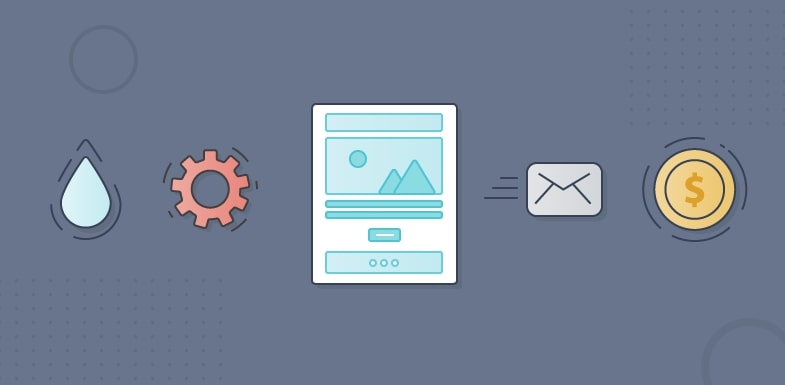
An email drip campaign, a.k.a a lifecycle or automated email campaign, is a marketing technique that uses automation to deliver emails at particular points in the consumer lifecycle. For example , a company carrying out a drip campaign will send a welcome email immediately upon registration, a follow-up two weeks later, and finally a “we miss you” email after a month has passed without the subscriber’s engagement.
Emails in a drip campaign can be focused solely on a predetermined timeline, or they can adjust to user actions. In the former case, the subscriber will receive the same series of emails no matter what they do. In the latter, the sequence will respond to the behavior of the customer and adapt the emails to their actions — like sending an email asking how they enjoyed their last purchase, for example.
Both of these approaches improve on a big weak spot in conventional emails: clients and leads will eventually sign up at various points in time, so without automating the emails, certain subscribers will not receive emails that were sent before they signed up.
For instance, if you launch your campaign at the beginning of March and anyone signs up at the end of April, that new subscriber will miss a lot of great emails. But if you’re using a drip campaign, you’d be able to serve every subscriber the same series, no matter when they sign up. Plus, you’d be able to customize it to any user ‘s behaviour to ensure that your emails are still important and that your recipients don’t unsubscribe.
What are the benefits of email drip campaigns?
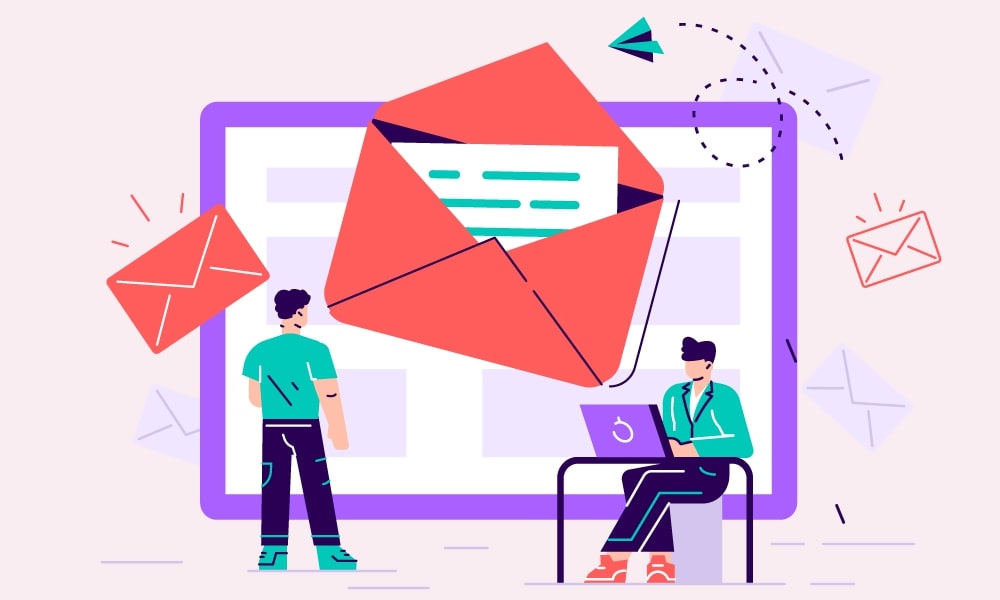
In short, they’re generally more successful than standard email campaigns. With email drips, not only can you make sure that all your subscribers receive your converting emails, but you can also adjust the sequence based on the behavior of individual users. In email marketing, the personalization is key: 70% of millennials claim they’re annoyed by brands that send meaningless batch emails and don’t personalize their experience.
To see the benefits of email drip campaigns, let’s start with one example: welcome emails. According to the Experian White Paper (PDF), the open rate for welcome emails is between 46% and 53%, which is 2-3x the normal open rate of 15-25%. Welcome emails that are sent immediately, however, have an even higher open rate of 88% — 3-5x the average open rate.
Without an email drip, you wouldn’t be able to enjoy the rewards of this high open-rate. And without automation, you’d be stuck regularly sending out bulk welcome emails on a regular, weekly , or monthly basis. Not only is it more time consuming, but it’s just less effective.
When your subscribers have been added to your sequence, you can start targeting your emails based on user activity, which gives you all the benefits of customization. Study after study shows that relevant emails are vital to the success of the email campaigns: 91% of customers are more likely to buy from brands that send out customized deals and suggestions, and 72 percent of consumers in 2019 are still engaged with brands that send personalized marketing materials. Essentially, email drip campaigns offer two key advantages over traditional campaigns; it’s making sure the emails hit the right people at the right time.
Example of an Email Drip Campaign
So now that you have some of the basic principles of email drip campaigns under your belts, let’s take a look at a real example. I moved to a new house a few weeks ago and found myself trying to furnish it. Like many others, I made an account on Wayfair. Immediately after signing up for their mailing list, I received this welcome email:
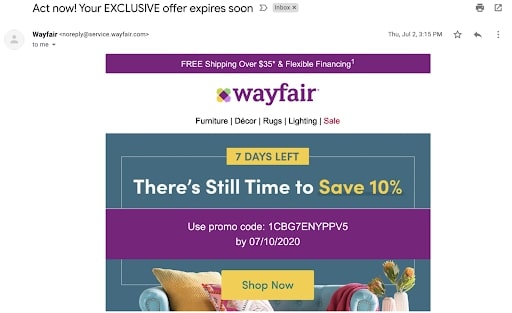
After having some time on the site and browsing through a few items, I received this next email based on one of the products I was looking at:

Afterwards, I got an abandoned cart email:
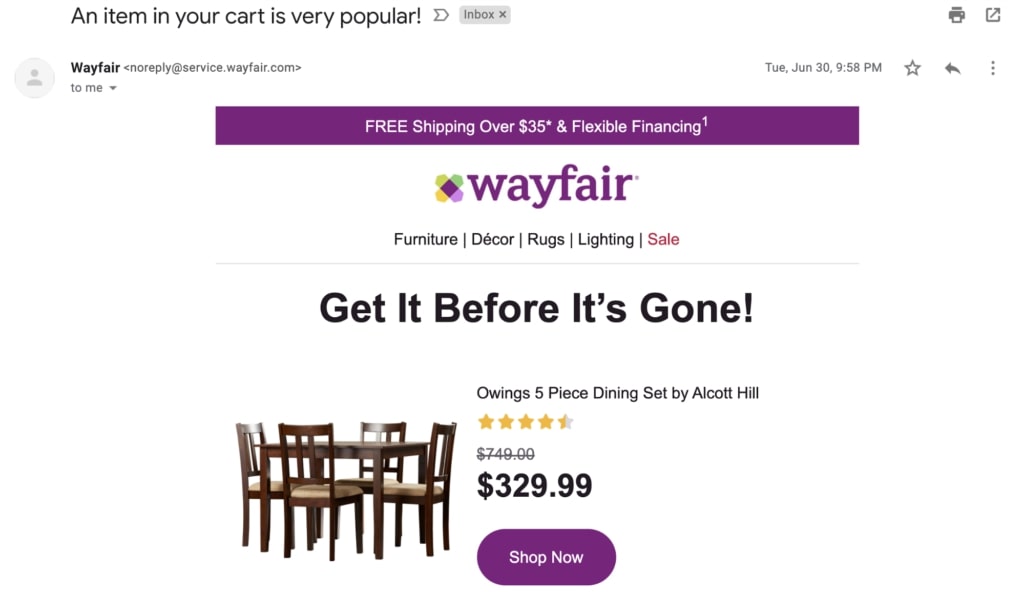
At the end, three weeks after signing up and not having placed an order, I got this email:
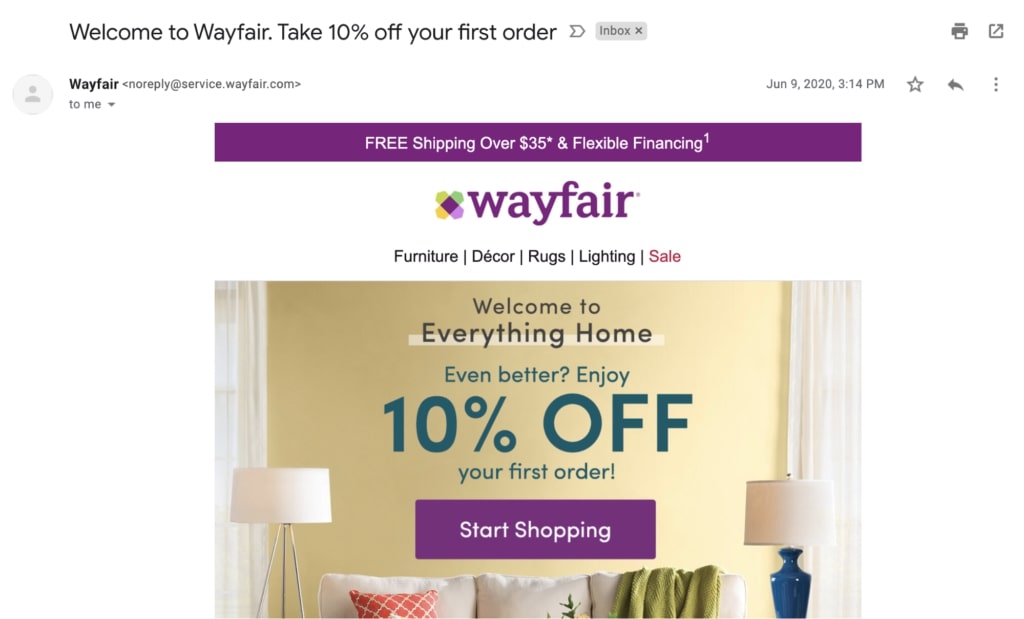
This series of four emails can be an excellent overview of what an email drip campaign looks like. It consists of four of the most common types of drip campaign emails: welcome, recommendation, abandoned carts, and follow-up. So, what can you gather from this series about Wayfair’s drip strategy? For one, Wayfair took advantage of reactive emails, not just pre-planned emails. Their drip sequence responded to my actions, which made it more personal and important to me.
When I showed interest in a piece of furniture, I received an email that made sure I didn’t forget about it. When I added a product to my cart and then dropped it, they let me know that the product was selling fast to build a sense of urgency, and then they pushed me to click the checkout button. Eventually, after almost a month had gone by and I had not made any transactions, they sent me a reminder that I had a discount code to try re-engaging me.
The beginning is an introduction, the middle responds to my behaviour, and the end is an email that makes a final attempt to re-engage. Although I ended up making a purchase shortly after receiving that last email, if I hadn’t, I would have started to receive fewer emails or be segmented into a list of subscribers that Wayfair might try to re-engage with at a later time.
How to Run an Email Drip Campaign
If the benefits of drip email marketing sounds appealing to you, here are the steps you can take to create one of your own:
Step 1: Set a Goal
Without a specific target in mind, the campaign will end up being a waste of time. To start with, assess your current performance and determine where you want to see some progress. For instance, are too many leads leaving their carts? Would you like more engagement?
When setting your target, be SMART a.k.a specific, measurable, achievable, relevant, and time-bound. Don’t say you want to boost your sales. Say you want to make 2,000 sales over the next month. That way, you will be able to precisely assess the success of your campaign and improve the next one accordingly.
Step 2: Segment your list
List segmentation is at the heart of email drip campaigns — drips work because companies can group subscribers based on mutual activity and send emails to only the most interested users. In order to create a successful campaign, you will need to know what kind of actions you are targeting so that you can segment your leads accordingly.
Consider your target and determine what kind of actions you need to focus on in order to achieve it. If you’re trying to boost revenue, you may want to group subscribers based on the types of items they’ve looked at. Alternatively, you may want to segment the list based on how long individuals have subscribed, which emails they have opened, or age demographics. The requirements for segmentation are entirely up to you, but make sure they fit with your target.
Step 3: Pick the right mail marketing tool
If you want to have effective drip email campaigns, you’re going to need the right email tool. There are lots of email marketing tools out there, and almost all of them provide automation functionality. However, if drip campaigns are your priority, I’d suggest AVADA Email Marketing. This tool allows you to capture subscribers, send automated emails, segment your lists, send abandoned cart emails and many more important tasks in drip email marketing. It’s free and you can download it on the Shopify app store.
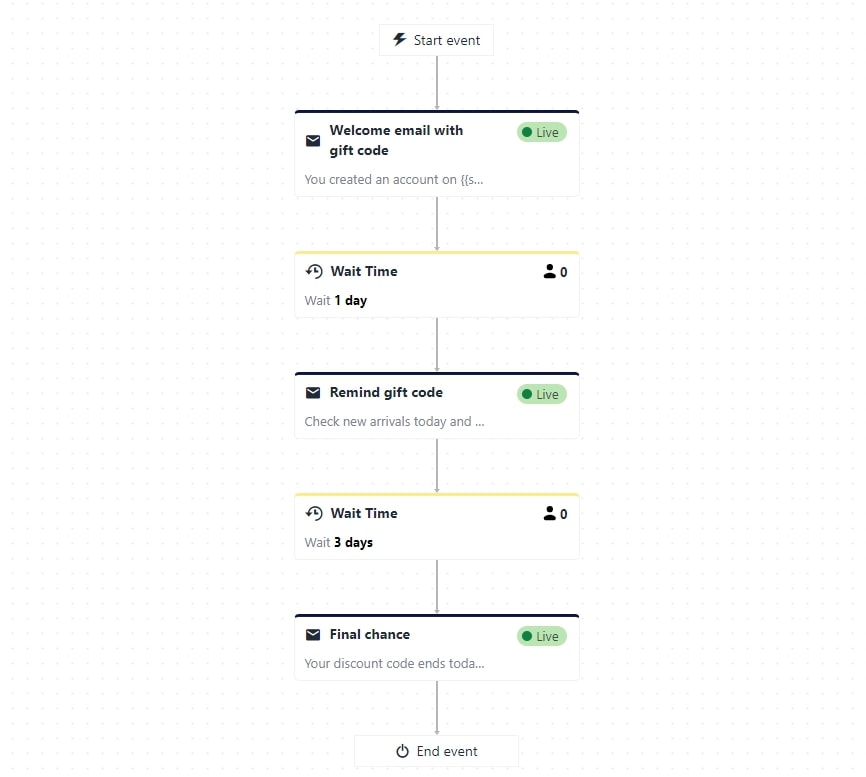
Step 4: Create your copy and plan your emails
Drip email campaigns use the same email sequence for different customers. Therefore, before you start, you’ll need to come up with a large number of killer emails that you can send out at different points in your customer’s purchasing lifecycle.
You may want to enlist the assistance of a specialist at this stage, as a skilled copywriter will greatly increase your ROI. If you’re going to deal with the copy yourself, make sure you test several different copies with split testing so that you submit only the most appropriate emails.
When your emails are ready, you’ll need to find out what action they’re going to take. Like copywriting, this is just as much an art as a science, and it will take lots of trial-and-error to make it right.
Step 5: Run your campaign and improve as you go
When all the pieces are in place, it’s time to let the campaign yield its power. But your work at this point is by no means over: you’re still going to have to monitor its success and make changes based on the outcome you’ll get along the way. If your campaign has a fixed end date, then you’re going to want to assess its success and use the findings to improve the next one.
4 Incredible Drip Campaign Examples to Steal Today
I hope you have your black hoodie (or black cat-suit) with you because it’s time to steal some inspiration for your next drip campaign! Let’s begin!
Netflix’s Win-Back Campaign
At one point, your loyal customer was delighted to do business with you. Something happened, though, and you saw them leaving. The reasons behind this are simple: your customer has found a better product, has forgotten about you, or no longer wants your product.
Since competition can be tough for companies with similar products/services, being smart with re-engagement strategies is a must. In this scenario, the best chance is a well-crafted win-back drip campaign that’s customized and enticing enough to bring your customer back. A great win-back drip campaign is coming from Netflix. The brand is well aware of the losses suffered as a result of lost subscriptions. To fix this issue, Netflix has launched a smart win-back drip campaign to reduce its churn rate and improve engagement.
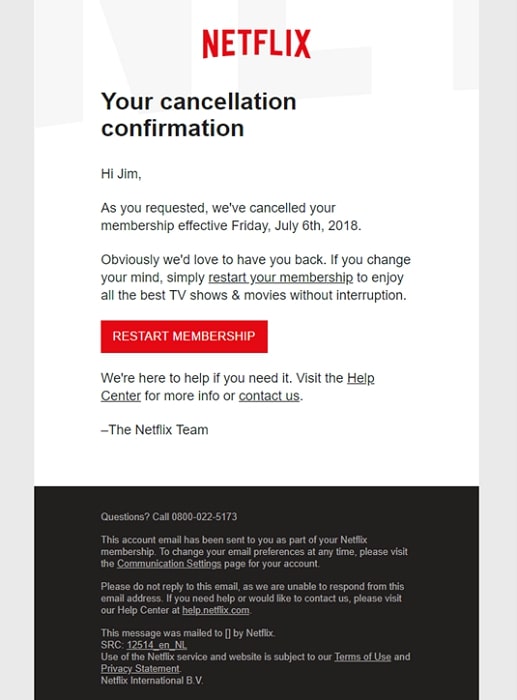
Although this email is nothing special, Netflix aims to win back its customer by including a brightly colored call-to-action. However, that’s not the only thing that’s going to get those lost subscriptions back. For the next three months , the company will give its former customers a series of emails containing all the new movies and TV series that are missing.
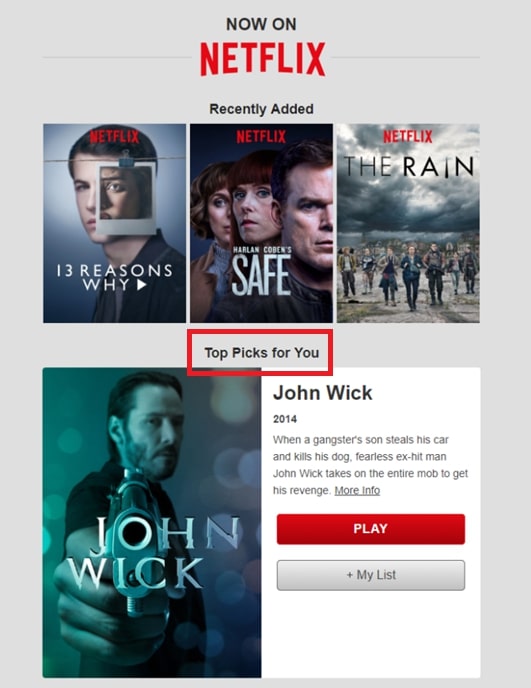
Showing their newly added shows along with the user’s top picks gives Netflix ‘s former customers more incentive to restart their subscription. After a series of tailored drip promotions, Netflix finally delivers targeted emails to show its customers what they need to do to experience all the benefits outlined in the email sequence.
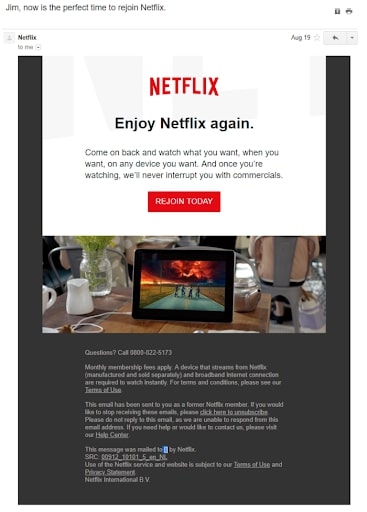
The brand’s whole win-back strategy is focused on telling the consumer how much fun they had during their subscription. So, preferring simplicity and showing your consumers why they need to reinvest in your brand is all you need to recover your lost sales.
Patagonia’s Weather-Based Recommendations Campaign
It’s a real thing to transform weather into sales, and not something I’ve just made up! If you’re familiar with weather-based marketing, then you know what it’s about. If not, let’s find out about it together! Weather marketing is about sending emails whose copies and visuals are focused on the location and weather conditions of the subscriber. To do this, you need to harness the power of email marketing automation to set up a drip campaign that will pull weather data from a given location.
All you need to do is offer tailored suggestions that are aligned with the weather forecast. When I got my first weather-based drip campaign, it was 5°C outside and I was already considering whether to buy a new pair of gloves or a lovely scarf. To my delight, Patagonia gave me just what I needed to defend myself against unexpected low temperatures.
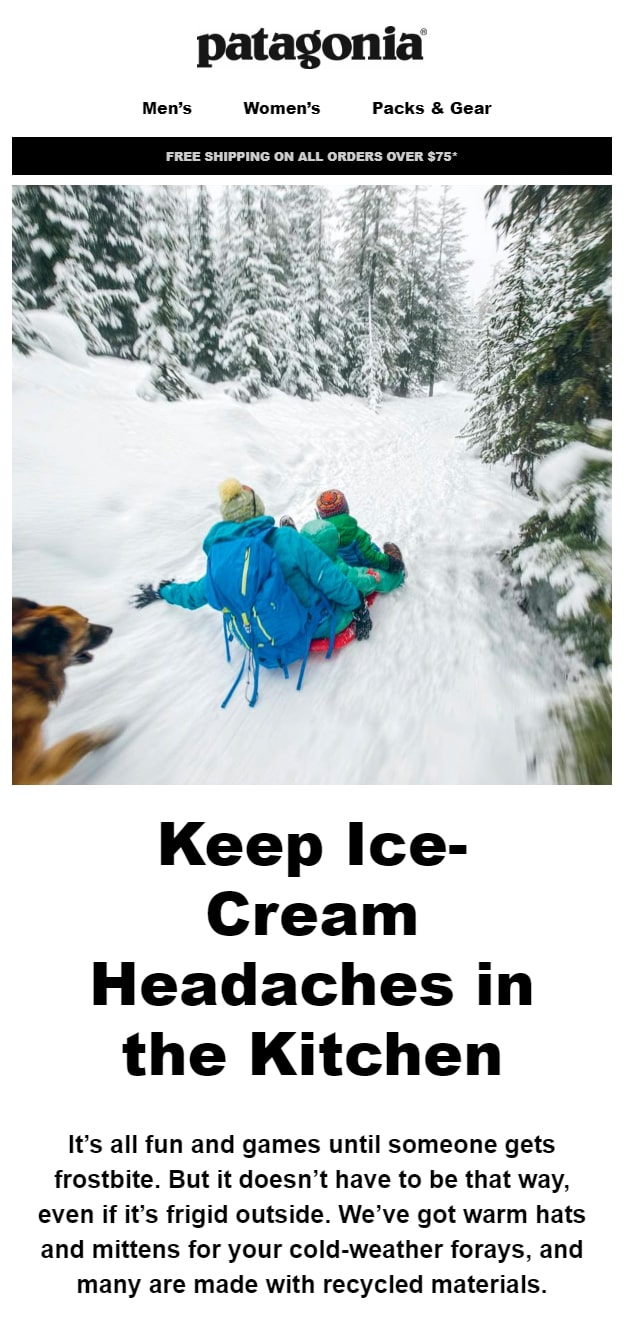
The focused message of the company makes this drip sequence an outstanding example of customized eCommerce email marketing for higher conversions. The success behind this, however, lies in giving your customers personalized suggestions that will satisfy the urgent need for environmental change. Of course , in order to get your subscribers to engage with your weather-based drip campaign, you need to send them a simple CTA.
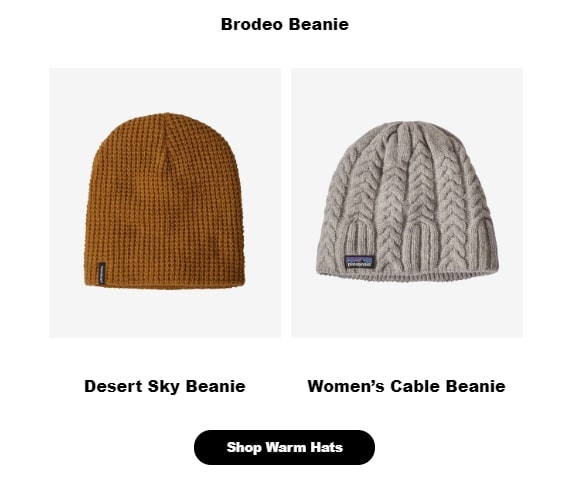
Going minimal, as you can see, is always the best way to do that, particularly when you need to deliver multiple CTAs to different items. Only make sure that your recommendations are in line with the weather conditions of your customer; otherwise, you may end up recommending the wrong product.
The Dollar Shave Club’s Cross-Selling Campaign
Making the ideal strategy to inspire the customers to buy more is one of the most daunting tasks that require the right preparation, time and commitment. Ok, what if I told you that you could skip all this with an excellent cross-sell drip campaign?
Cross-selling is an efficient promotional tactic that seeks to recommend additional items to consumers on the basis of their order history and personal preferences. Now, if you take that strategy and turn it into an enticing email, you’ll get one of the most successful email drip campaigns to raise your Average Order Value (AOV) and make your sales skyrocket.
To master the art of cross-sell drip campaign, give your customers something that will make them think it will be a pity not to add it to their cart. The Dollar Shave Club is a brilliant example of a cross-selling drip campaign. I’m sure you’ve heard of the brand before. Or at least they came across their viral landing page and video! Here’s another clever marketing campaign:
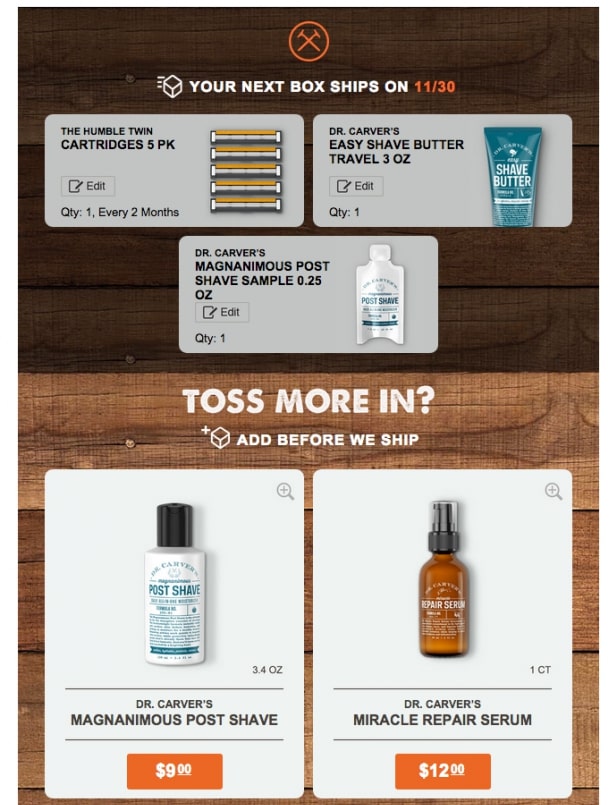
The Dollar Shave Club’s cross-selling drip promotion hits all the right notes. How come? First of all, the email summarizes the order of the customer, showing useful information about each item. Then, the next segment offers consumers a wonderful opportunity to purchase additional goods that compliment their initial order. Bear in mind that to work, your cross-selling emails need to be straightforward and well-designed.
Don’t turn them into hideous promotion campaigns that will yell, “Buy me now!. Rather, use your drip promotions to recommend that “Based on your purchase history, I think this item will also benefit you.” That’s cross-selling drip marketing done right.
Leesa’s Limited Offer Campaign
One of the most powerful tactics used by hundreds of brands is probably limited sales drip promotions. But you already knew that, didn’t you? These email promotions are working because they have an enticing deal that your subscribers can’t miss.
Of course, when you fill these campaigns with the right motivation and a magic X percent off, you get a conversion blast. Here you can see how Leesa combined its limited offer drip series with a strong sales trigger:
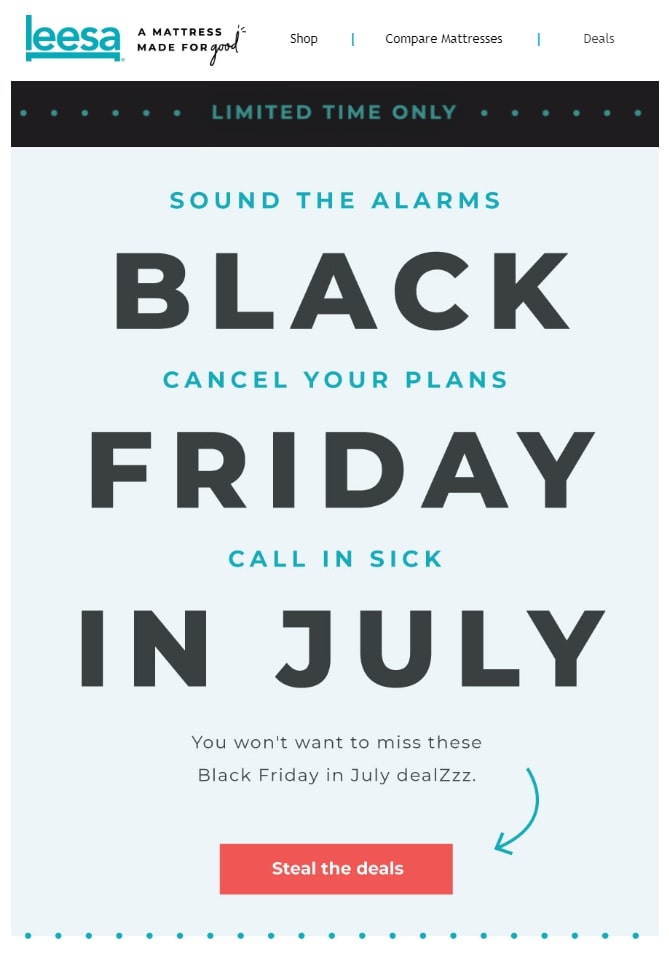
Black Friday in July, huh? This is a steal! Not only that, but Leesa is providing two more outstanding promotions to maximize its click-through and conversion rates. The first one in the email series tells its subscribers that the sale will soon be over. For Leesa’s subscribers, this is yelling “Hurry up, the awesome deal will soon be done!”
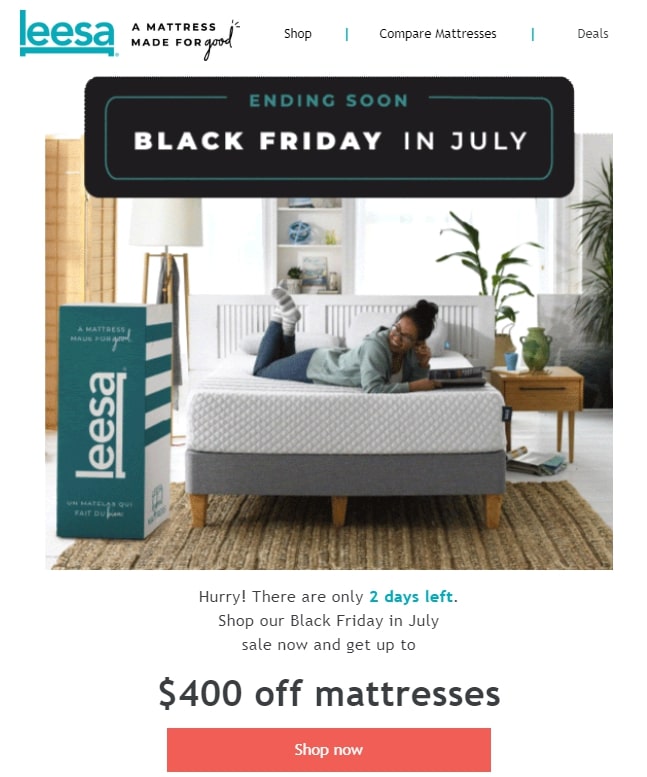
Leesa, then, has another secret ace up their sleeve to improve conversions. Subscribers who did not buy during the limited time of sale would come across a little surprise:
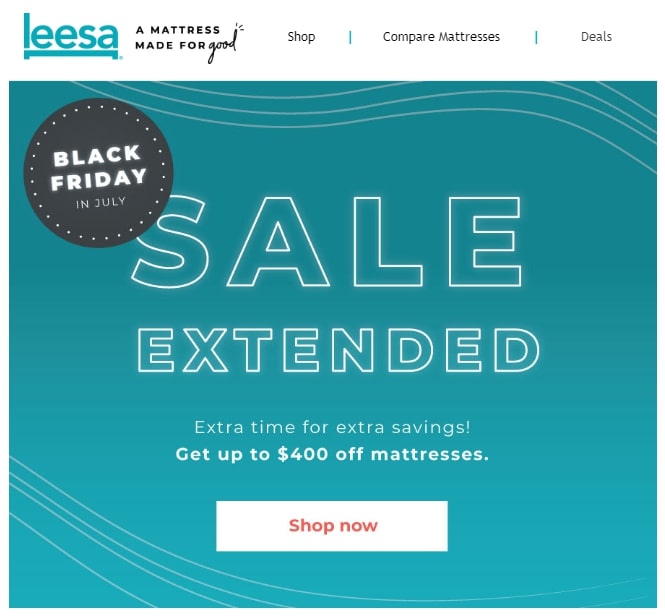
Sale has been extended! Wow, what a relief! This email sequence is one of the top best practices you can use in your email drip campaign. To sum it up for you, the Leesa Drip Email examples give subscribers an amazing experience:
- First, they are informed of the limited sale of Black Friday in July,
- The brand then informs them that the deal is good for another two days, and
- Finally, like the deus ex machina, the final email tells them that the deal is being extended.
Everyone loves good sales, and Leesa knows how to make their subscribers buy more through this clever drip marketing emails.
Final Words
That’s it! I hope this article has given you valuable information about drip email marketing campaigns. Please feel free to leave comments below for further discussion on this topic.
New Posts






